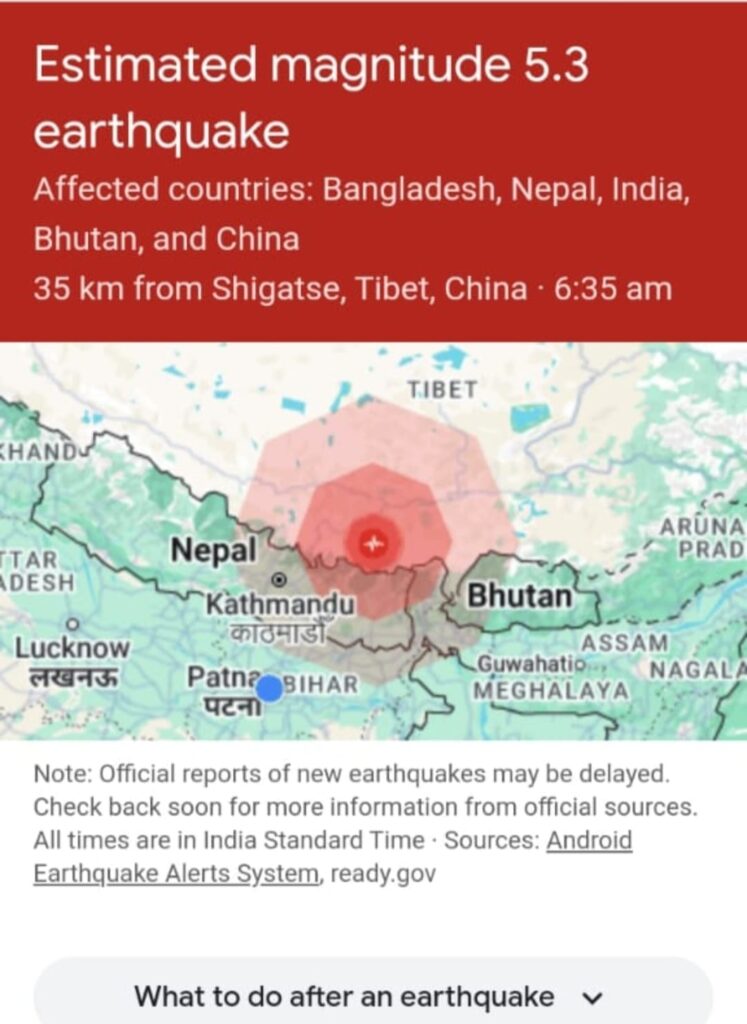A 7.1 magnitude earthquake in Tibet sends tremors across northern India, affecting Bihar, West Bengal, and Assam. Stay alert and follow safety guidelines.
- Magnitude 7.1 earthquake in Tibet near the Nepalese border.
- Tremors felt in Bihar, West Bengal, and Assam.
- No significant damage or casualties reported.
- Authorities urge residents to stay vigilant and follow safety protocols.
Introduction
In the early hours of Tuesday, January 7, 2025, residents in various parts of northern and northeastern India were startled by significant earthquake tremors. The tremors were felt in regions including Bihar and West Bengal, as well as extending to Assam. The origin was traced to a 7.1 magnitude earthquake in Tibet, near the Nepalese border, known for its seismic activity due to the collision of the Indian and Eurasian tectonic plates.
Main Details
The tremors began at approximately 6:35 AM IST and continued for about 15 seconds, according to local reports. In Siliguri, West Bengal, the shaking prompted residents to evacuate buildings, while similar experiences were reported in Jalpaiguri and Cooch Behar shortly afterward. Despite the alarming tremors, there have been no significant reports of damage or casualties, providing some relief to those affected.
Impact on Bihar
Bihar was one of the states where the tremors were notably strong. According to a local resident, Priya Sharma, “I felt the entire building shake, and we immediately rushed outside. It’s terrifying to experience such a powerful tremor early in the morning.” The Bihar State Disaster Management Authority has urged people to remain cautious and follow safety protocols, although no major damage has been reported in the region so far.
Tremors in Assam
In Assam, the tremors were also felt distinctly. Residents in cities such as Guwahati reported feeling the ground shake. Rajiv Das, a resident, mentioned, “We felt the tremors for a good 10 to 15 seconds. It’s not uncommon here, but it still catches you off guard every time.” Authorities are closely monitoring the situation, though initial reports indicate no severe damage.
Geological Context
Nepal and the surrounding regions, including Tibet, lie in a highly active seismic zone. The collision between the Indian and Eurasian plates creates immense pressure, often leading to significant earthquakes. This region has historically experienced devastating earthquakes, including the 2015 Nepal earthquake that caused extensive damage and loss of life. The regular seismic activity makes it imperative for residents and governments to stay prepared.
Conclusion
While the recent earthquake tremors have not resulted in significant damage or casualties, the incident serves as a critical reminder of the region’s vulnerability to seismic events. Authorities continue to monitor the situation and have advised residents to stay alert and adhere to safety guidelines. It is essential for people in these areas to have an emergency plan in place and stay informed about potential natural disasters. As always, safety remains the top priority.

